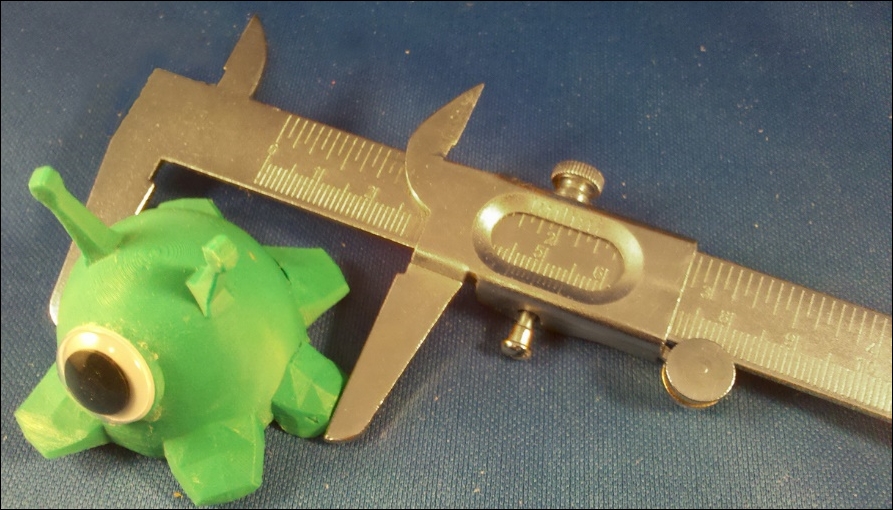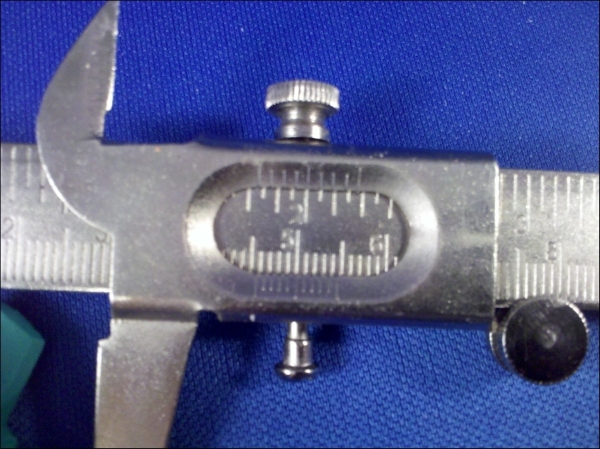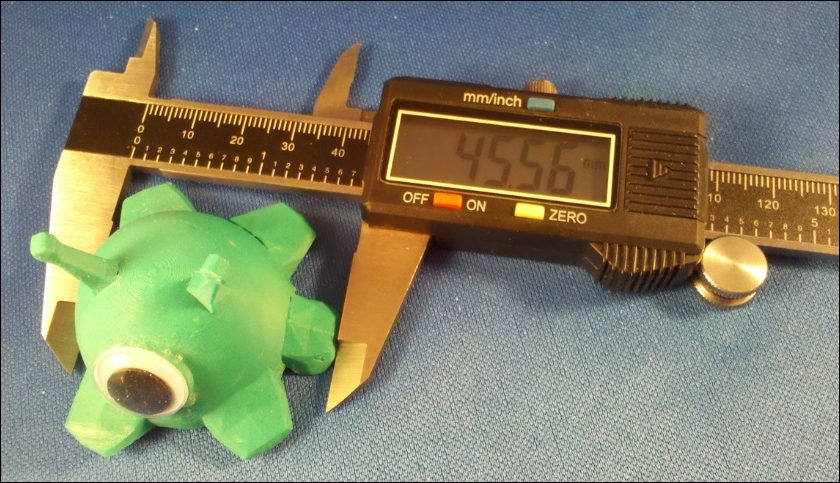The most common technique for taking accurate measurements is the use of a tool called a caliper, a must-have for anyone who models for 3D printing. Calipers measure distance with a high degree of precision and can measure in three different ways: the outside diameter of an object with the outside jaws, the internal diameter with the inside jaws, or the depth with the depth probe at the far end. There are two common calipers: manual (or Vernier) calipers and digital calipers.
If budget is a concern, then perhaps a Vernier caliper is preferable, since they are generally less expensive than their digital counterparts. These calipers operate purely mechanically, but have a clever trick that allows them to be just as accurate if read properly:

Open the jaws to take a measurement and tighten them over the object to be measured. Then take a close look at the little window:

The leftmost tick is between 4.5 and 4.6, so this object is between 4.5 cm and 4.6 cm (or 45/46 mm). Then, count the tick marks on the outside until one of them lines up perfectly with one of the ticks on the inside. In this case the fifth tick mark on the outside lines up with a tick mark on the inside. This is the hundredths part of the measurement, so this object measures 4.55 cm or 45.5 mm.
Vernier calipers never need to be calibrated. They don't need batteries, so they'll always work, and they're cheaper. But they do take some additional effort to read properly and lack the "cool" factor of their digital cousins.
The easiest measuring tool to use is the digital caliper. Simply turn it on, tare or zero the reading while closed, then open the jaws, put the object to be measured between them, clamp it down, and take the reading. It's fast and accurate without much effort. Some models even have a port that can transfer the measurements directly to the computer:

But digital calipers have the disadvantage of being more expensive and relying on batteries. They can also go off calibration, reducing their accuracy. However, for quick and easy use, a digital caliper is hard to beat.
Whatever calipers you use, familiarize yourself with all parts for measuring different things. The large jaws on the front are for measuring the outside of objects. The small jaws opposite them are for measuring the inside of objects. At the end of the ruler section is a depth sensor that can be used to measuring the depth of something.
